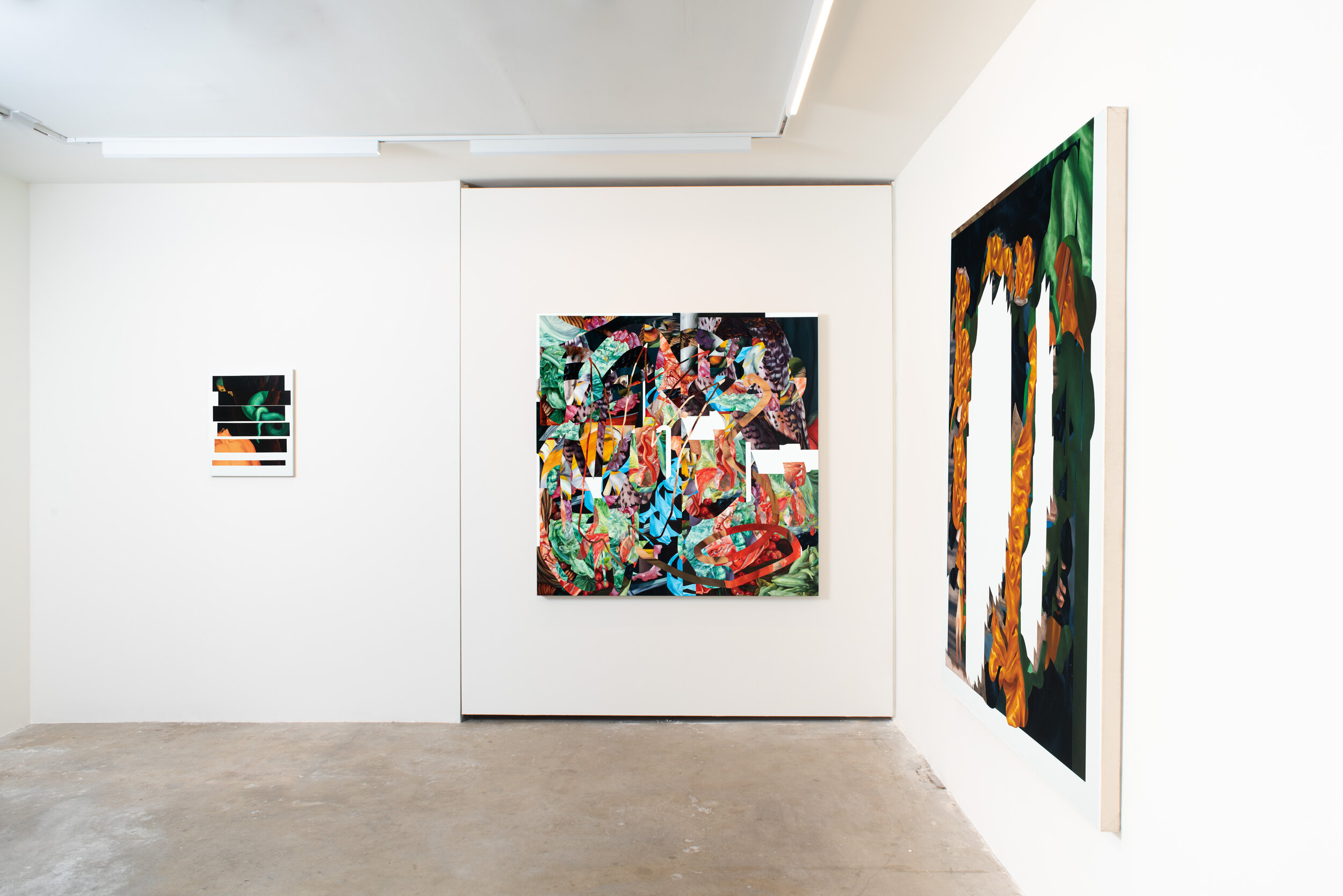Scott Laufer
works exhibitions news about










Recent Paintings
Viewing Room | September 10 - 26, 2020
press release
Moskowitz Bayse is pleased to announce the representation of Los Angeles-based artist Scott Laufer, coinciding with a presentation of recent paintings in our Viewing Room. The works will be on view at the gallery from September 8 - 26, 2020, and featured on Gallery Platform Los Angeles from September 10 - 16, 2020.
Scott Laufer’s recent works splice and reorganize histories of painting, presenting them as challenging source material for pictures that probe time, painted historic narrative, and the museum’s changing role within contemporary society. Utilizing digital mark-making strategies as preparation for his paintings, the artist duplicates, truncates, enlarges, obscures, and repositions the essential trappings of pre-Industrial European painting to the point of near abstraction. The result often simulates the felt effect of flattened historical timelines, as well as the implicit digital lens permanently installed in twenty-first century minds, where all images exist between fidelity and fiction, and as proxies for broader truths.
A self-taught painter, Laufer spent hours in museums studying and reproducing European Masterworks, absorbing techniques and wrestling with that genre’s continued relevance, both as a formal template and a point of stark departure. As the museum becomes a principal battleground for ethical concerns over which histories deserve continued study and why, Laufer’s work offers a timely reminder that cultural history, like memory and vision, proves fluid, subjective, and experiential. In Laufer’s practice, history becomes as much a material as the paint itself, with both recalling passed down traditions and their once-sacrosanct, canon-defining roles.
Laufer approaches painting in the technically rigorous, deeply traditional classical mode with caution; he consciously and continuously engages with a legacy long upheld as a high watermark in Western art history, while benefitting from a self-awareness earned through focused inquiry as opposed to the inherited reverence that sometimes accompanies Old Master painting–often to its detriment. Instead, Laufer considers that history on its merits, even going so far as to challenge the very idea of mastery–asking at what point does influence become interference?
In Laufer’s work, this transition functions as a conceptual and practical driver of meaning, transferring agency from his subject matter–nominally European Masterworks, but more accurately his own engagement with art history–to the immediacy of his brush. Communicating a sense of simultaneous indebtedness to, and inevitable distancing from, one’s spiritual and aesthetic influences, Laufer’s paintings take on narrative meaning outside of their subjects and the circumstances of their creation. They retell the self-evident story of the inextricable anxiety of the museum as both institution and physical space, where often re-contextualized objects float elevated, assuming outsized positions of influence on anyone who might seek to contend with them.
While Laufer’s recent works might initially read as appropriation, they prove better understood in the context of their creation, as well as the artist’s protracted and evolving process. Initially learning to paint by candidly and faithfully copying Old Masters, Laufer came to seek the same inventiveness that distinguished those painters from their contemporaries. Typically employed as court painters, these artists were praised for their ability to faithfully render royalty, nobility, religious iconography, and the accompanying accoutrements thereof. Now, though, museum audiences seek out paintings by these painters, as opposed to those of their subjects. This distinction proves crucial, as Laufer teases apart the act of painting from the sliding facts of subject matter and portraiture, focusing instead on the innate qualities of the paint and its underlying intentionality. Thus, rather than appropriate known images, Laufer’s paintings–much like the museum itself–change their meaning. Fraught histories, shadowy origin stories, doomed subjects, and regal fabrics become parts of glyphic abstractions that speak to the changing conception of tradition, which continues to come under deserved scrutiny. Laufer’s practice, from the techniques he employs to the images he renders, contribute to discussions of identity and cultural history in painting, and their effect on current understandings of medium, context, and, ultimately, the meaning and consequence of contemporary oil painting.


